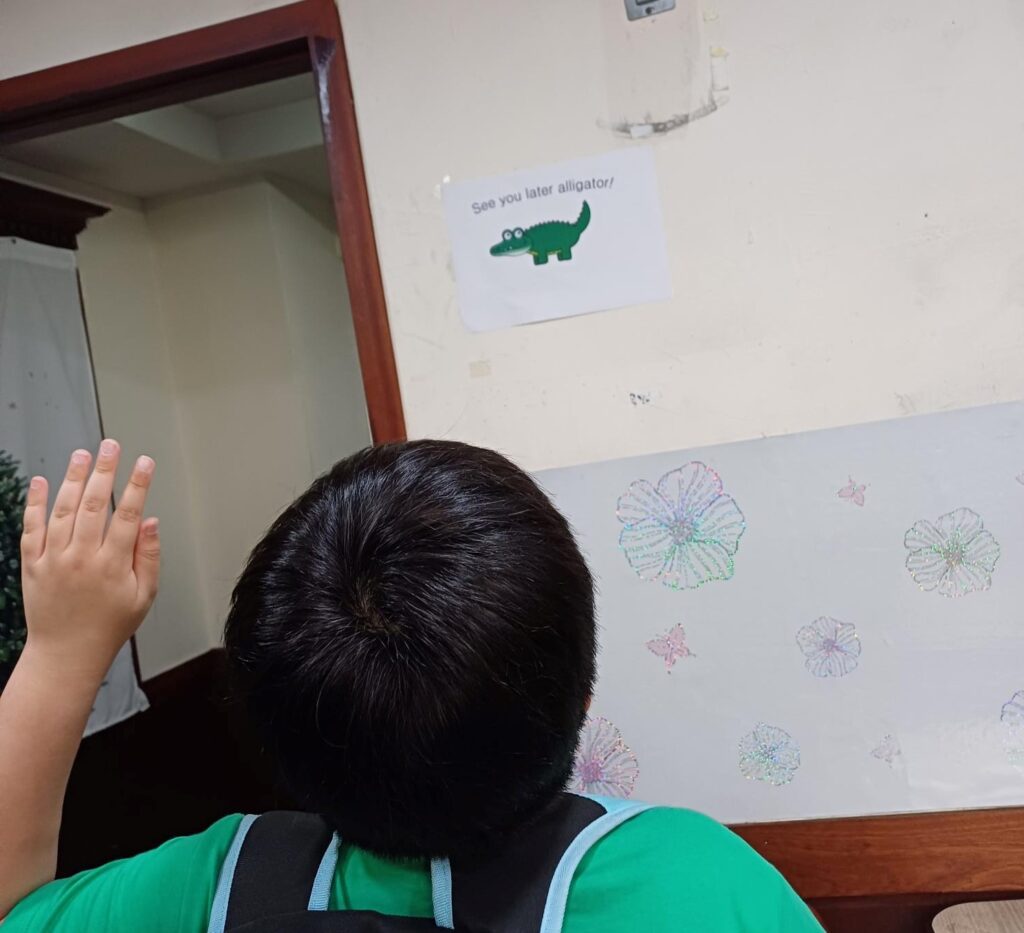Student Level: Beginner
Anyone who has tried to learn a foreign language will be familiar with the experience of quickly learning the kind of short, frequent expressions and phrases spoken daily. Used enough, we don’t even need to think about how to say them. They are prefabricated chunks of language that can be used to perform a particular communicative function. That is why phrasebooks are so popular with holidaymakers. My dad, for example, can expertly order a bottle of red wine in five different European languages🤣!
Learning useful expressions should not be overlooked in the classroom. They provide a shortcut to language learning, demonstrating to students that all the new words and grammar they are learning can be used to say something worthwhile.
The following is a list of classroom expressions I encourage my students to learn and use both with me and each other:
| Can you repeat that, please? May I borrow a …….please? See you later (alligator!) Nice to see you! Nice to meet you. How do you spell…….? What does (new word) mean? How can I say (first language word) in English? Can you help me? May I use the restroom? I don’t understand. I don’t know. Please be quiet. Can you explain that again, please? See you tomorrow! Would you like a candy/ some chocolate? (Very important) Have a nice day! Have a nice weekend! |
How to Teach Expressions
You could hand out a printed list of target expressions and instruct the students to practice and memorize them. Indeed, for older students, this may be enough.
However, I prefer to introduce one expression on the board at a time and explain its meaning at the beginning of class. This makes it easier for the students to focus on each expression and begin to digest the new ‘chunk’ of language.
Once an expression has been taught, I try to remember to include it in my classroom speech so that the students can notice me using it and imitate it.
I also display the new expression on the wall. This helps students to become familiar with it and refer to it when needed. For example:
Once the students have been taught several expressions, it is essential to review them and keep the cycle of usage going so that they eventually use the expressions almost as if they were a single word. Here are a few review exercises:
Exercise 1. Concept checking questions
The teacher asks the class prompt questions. For example:
What do I say/ask when I want to know how to write a word correctly?
…..when I didn’t hear something?
….when the student next to me is being too noisy?
Exercise 2. Act it out
The teacher writes down an expression on a piece of paper and gives it to a student or a pair of students. The aim is for the student to act out (or mime) the context for using the expression, and the other students must try to guess.
For example:
The two students are studying next to each other. One acts like they have made a mistake and looks inside their empty pencil case. They nudge the student next to them….
‘May I borrow an eraser?’
Exercise 3. Mouth the expressions
The teacher begins by silently mouthing out one of the expressions. The students then have to try to lip-read what they are saying. The student who correctly guesses the expression can then take their turn, silently saying another expression to the class, and so on (at this point, take a seat!).
Exercise 4. Word quizzes
There’s nothing wrong with a few good old-fashioned word quizzes to recycle learned language!
One simple quiz is to scramble up the letters of the expression and write it on the board. The students then have to race to unscramble it. For example:
oeeetsNiyuco = Nice to see you
Another fun activity (if possible) is to draw the expression on the board using pictures/ codes/ math, or anything!… Like a kind of hieroglyphic. The students always have fun trying to work it out. Here’s a couple for you:
Answer: See you tomorrow
Answer: Nice to meet you 😎😎😎
*If your students had fun with this activity, check out my book, The Emergency English Teacher, which has fun games for all student levels. It is excellent when you need to fill up that bit of time at the end of a lesson.
Teacher Notes
Whenever I notice one of my students correctly using a taught expression, I always try to praise them (even if it’s just a fist bump!) to reinforce their efforts.
-Students will still sometimes neglect to use the correct expression. Something I often hear is,
“Teacher…new word spelling?”
It would be easy to answer them here, but this would only reinforce a bad habit. If they have learned the correct thing to say, it is time for them to start saying it! Look at the expressions on the wall or point to the student’s notebook…they soon work it out.
The trick with teaching expressions is to keep at it. It’s the same with anything you teach in the ESL classroom. Not to teach something and move on, but to keep reviewing and encouraging its use. The students will be happy using expressions because they are using English confidently without error, and you will feel satisfied because you can see the students effectively using something you have taught them.

This honestly isn’t a posed photo🤣🤣
Ok, that’s it. Let’s move on to a lesson plan for teaching nouns.